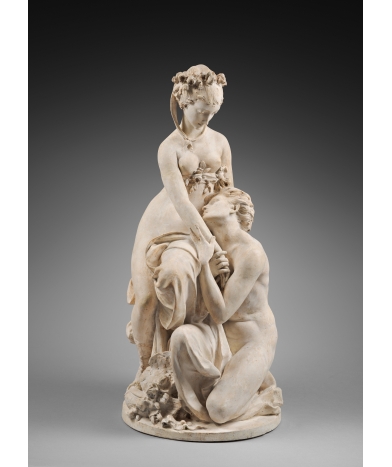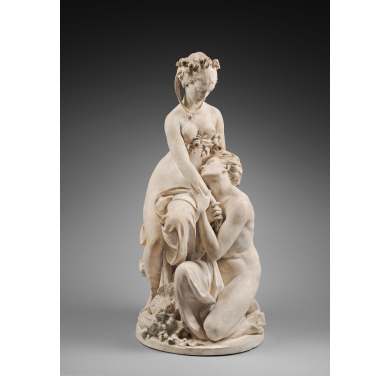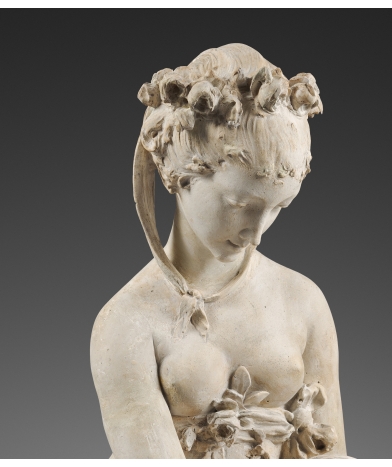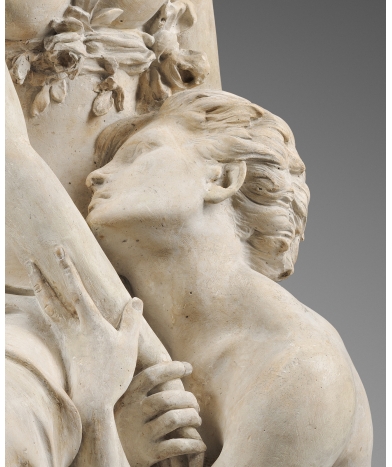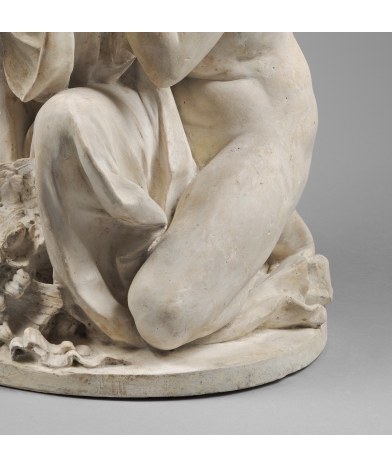Gustave DELOYE (1838-1899) - The passion
Signed by the artist on the base
Dimensions : Height 73cm - Bears an Antique Collection label
Jean-Baptiste Gustave Deloye is a representative of the neo-baroque style that emerged during the Second Empire. In architecture and sculpture, this artistic movement is also known as the “flamboyant Third Republic”, and it played a key role in the reconstruction of the Paris we know today. From the same artistic movement, “L'Immortalité devançant le Temps” (Immortality Ahead of Time) is the allegorical, monumental sculpture that adorns the roofs of the Grand Palais, a world-famous group of prancing horses.
In 1984, the Musée d'Orsay placed a monumental sculpture by Gustave Deloye in its central aisle: “Saint Marc”, a 2.05 m high plaster cast, is a work with which Gustave Deloye inaugurated the neo-baroque style that would lead to Art Nouveau a few years later.
Born in Sedan in the Ardennes in 1838, Deloye entered the Ecole des Beaux-Arts in Paris at the age of 19. Four years later, he won a mention in the Prix de Rome competition, and in 1861 was awarded second prize. Between 1865 and 1886, Gustave Deloye took part in the Salon and received numerous awards. He was awarded a bronze medal at the 1889 Universal Exhibition and the Légion d'honneur in 1892. Works by Gustave Deloye are rare, whether in marble or plaster. This extremely demanding artist was not very prolific, and the small number of works on the market probably explains his low public profile.
Among his works on display in France are “Léon Noël” bust in the Père-Lachaise cemetery in Paris, “Saint Marc” in the Musée d'Orsay, and “Giuseppe Garibaldi” monument adorning the Place Garibaldi in Nice.
This plaster depicts a man kneeling at the foot of a woman. The postures of the two figures are particularly graceful. The man nestles his head against the young woman, who gazes at him tenderly. Their hands are intertwined. Attention to detail, the supple drapery, the curly hair, the floral elements and the turtledoves at their feet are all striking. This sculpture is a true tribute to love.
This plaster cast is the original proof created and signed by Deloye. It is an essential work that prefigures Art Nouveau. It is in good condition, with only a few minor accidents, the most notable of which is on the beak of one of the turtle-doves, whose repair is visible. The plaster was recently restored by removing an ochre patina applied later.


